Issue 17 : 28 October 2018
Talofa Lava, Kia Orana, Malo E Leilei, Tena Koutou, Hello ...
... and welcome to the latest issue of “For The Love Of The Game”, the official e-zine of the New Zealand Amateur Sport Association Inc. We hope you enjoy reading the articles below.
If you have any feedback on this issue, ideas for future articles, or would like to contact the Editor, please click here. And, you are invited to forward the e-zine to others you know, who may be interested in reading it.
If you are interested in applying for membership of the Association, please click here.
Tom O’Connor Completes Twelve Full Rounds ...
“How can you sum up a man like Tom in a few words?”
This was Rachel Henry’s response to a question posed by the Editor on the contribution of Tom O’Connor to Southland and New Zealand Boxing. Rachel is on the Executive of Boxing New Zealand and the Southland Boxing Association. Like many who follow the sport in this country, she sadly but fondly remembers Tom, following his recent death at the age of 83, after more than six decades of service to the sport.
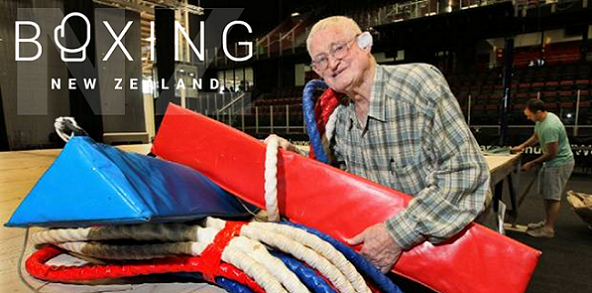
(Tom O'Connor, a legend of amateur boxing in New Zealand)
Henry says that O’Connor was a genuine man whose willingness to help and share his boxing knowledge and advice was unsurpassed. “He lived and breathed boxing”, she says.
In 2017, O'Connor was appointed a Member of the New Zealand Order of Merit, in recognition of his service to the sport both in Otago and Southland, and at a national level. In his distinguished sporting career, Tom served as a national selector, and also acted as the Manager for travelling national teams that took him to Tahiti, New Caledonia, Vanuatu, Jakarta and Tonga. In 1964, he qualified as a boxing judge, and three years later passed his referee's badge in Invercargill. In 2010, Tom was awarded the Brian O'Brien Trophy, New Zealand Boxing's highest award.
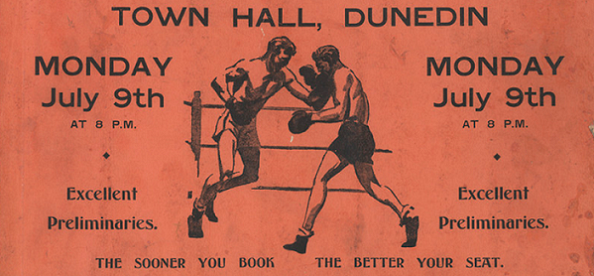
Today, there are still more than 3,000 amateur boxers involved in the sport nationally, about the same number as recorded in New Zealand’s first-ever sporting census, in 1924. Henry says that boxing is still strong in Southland, without doubt in large part owing to Tom O’Connor’s tireless enthusiasm, despite funding being the greatest challenge to the growth of the sport.
As the Otago Daily Times noted "he was a humble and dedicated man and we can all learn a thing or two from the way he conducted himself". The Association salutes the contribution of Tom O’Connor to the sport of amateur boxing.
Lessons From History – The NCAA And Amateur Sport ...
90 years ago, The Carnegie Foundation in the United States published a report (authored by Howard J. Savage) on “American College Athletics”, which sought to expose and eliminate the “win-at-any-cost” sporting culture that had distorted educational priorities for all students on United States university campuses.

The report concluded that a “change of values” was required “in a field that is sodden with the commercial and the material and the vested interests that these forces have created.”
The report defined commercialism as “that condition which exists when the monetary and material returns from sport are more highly valued than the returns in play, recreation, and bodily and moral well-being.”
The report continued that “those who have sought to uphold the status of the amateur in the United States have proceeded, consciously or unconsciously, upon the notion that the man who plays a game for fun, or for the love of it, or for sport's sake, is in some way advantaged over the man who makes a living at it.”
“The root of all difficulties with the amateur status touches the desires of certain athletes to retain the prestige that amateurism confers and at the same time to reap the monetary or material rewards of professionalism.”
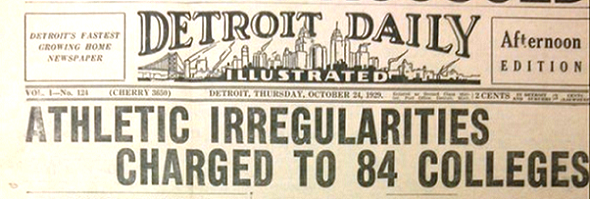
In 2018 New Zealand, the notion of “sporting prestige” is perhaps as confused as it had become in the United States in 1928, with New Zealand’s secondary schools (rather than our tertiary education institutions) increasingly the environment in which the “win-at-any-cost” sporting culture, which originally spawned the NCAA in the United States, has now developed.
The risk to adult participation in organised amateur sport in New Zealand, is the same risk which has been realised in communities across the United States, where sport participation is now more likely to comprise individual physical activity, rather than being part of a community-based and community-focused sporting organisation.
Heartland Rugby Warms The Cockles ...
The community excitement which accompanied the Lochore Cup Final played at the Levin Domain on Sunday afternoon, was a great expression of the values of the game as it was played in the era of Sir Brian Lochore (after whom the Cup is named), with all but five players originating from amateur Clubs forming part of the participating Provincial Unions.
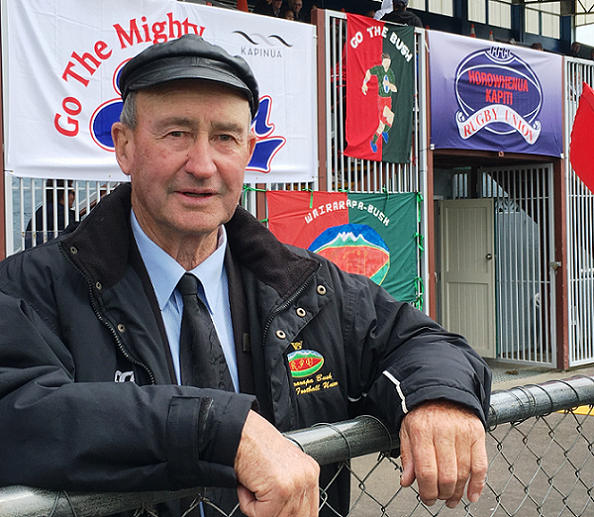
(Waiarapa-Bush RFU President, Bryan Weatherstone at Levin Domain on Sunday)
In the current era, where Provincial Union loyalties are more likely to be determined by money than association, Sir Brian has observed that, "you have got to give everyone a similar pathway and a similar opportunity.”

Reflecting on the sporting environment of his era, Lochore said "I was told that if I wanted to be an All Black I would have to go and play in Wellington". "I said 'I do not want to play in Wellington, I have a farm here and this is where I am staying'." Sir Brian went on to play 68 matches for New Zealand, including 25 tests, captaining the team on 46 occasions.
For the record, Horowhenua-Kapiti won the Lochore Cup by 26 points to 23 in a scintillating match. It was Horowhenua-Kapiti's first national title since their centenary in 1993 and a fitting conclusion to their 125th anniversary year.
Viewpoint : Sport And Religion ...
Harold Bennett, the Manager of Springbok Touring Party of 1921 was probably the first person to identify the religious zeal with which some New Zealanders followed the national game, when he observed that “rugby is a sort of religion in New Zealand”.
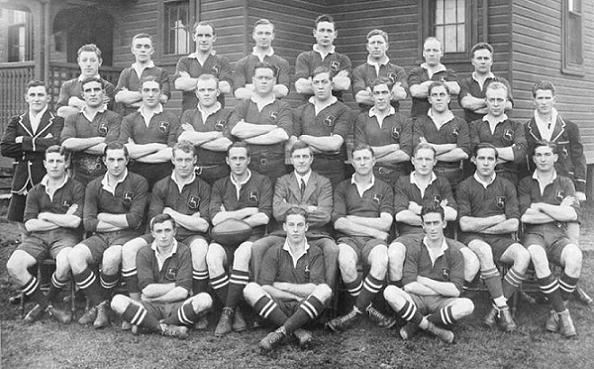
(Harold Bennett, sitting centre in suit and tie, was the first to link "rugby" and "religion")
His observation prompted fiery denunciations from the pulpit and humorous social commentary, in equal measure, with the following verse one expression of the latter.
See how in their open-air temples
Enthusing assemblies of "sports”
Exult in expressing devotion
To idols in jerseys and "shorts"
With rousing hosannas of welcome
In homage to vigour and speed
The faithful display their adherence
To Rugby's invincible creed.
The social reality was that in that era, the encroachment of organised sporting activity into the realm of organised Sunday worship was considered to be a direct threat to religious authorities in this country. Until the end of World War 2, there was little social tolerance for organised sport of any kind to be played on Sundays, although unorganised “harmless” sport was generally accepted as a worthwhile pursuit, (but only on Sunday afternoons).
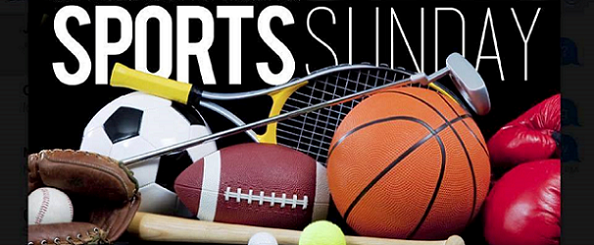
Many churches or religious movements sought to regulate their members involvement in sport by forming sporting clubs or associations, which heavily influenced many national sporting codes. Today, in increasingly secular New Zealand, remnants of that control over sport still exist, but more in name (such as the New Zealand Marist Rugby Football FederatIon), than in deed.
From The Archives ...
FULL RESPECTABILITY FOR SPORT
PRESS, VOLUME LXII, ISSUE 18659, 7 APRIL 1926
“The amateur sportsmen of America have offered, and the authorities apparently are going to accept, a “Sports Bay” in the magnificent Cathedral of St. John the Divine now under construction in New York City.
If we are right, in supposing that the offer will be accepted, visitors to the Cathedral, will one day, and before very long, look up at a stained glass window thirty feet high on which not merely cricket but racing, not merely tennis and baseball, but boxing, steeplechasing, trap-shooting, and billiards, as well as about twenty other "clean, wholesome, and well-regulated" games, will be literally and yet piously portrayed.
In a recent address to the National Collegiate Athletic Association the Bishop of the Cathedral said that a "well-played game of polo, or of football, is in its own place and in its own way as pleasing to God as a beautiful service of worship in the Cathedral."
A photographic reproduction of the submitted design shows a rose, with the panels containing each four circles and nine semi-circles dedicated to the nation's most popular games.
Horse-racing, we are bound to confess, heads the-right-hand panel, so that in America in future it will be possible to go to the races not merely without a thought about brimstone, but with something like apostolic fervour.”
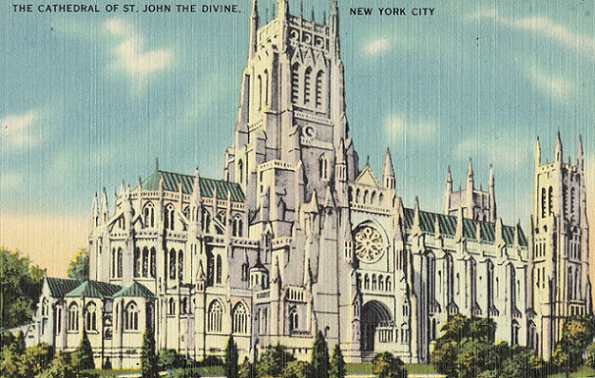
The "Sports Bay" at St. John the Divine Cathedral, on Amsterdam Avenue in New York City is dedicated to St. Hubert (656-728 A.D.), the patron saint of hunters. More than two dozen sports are depicted in the rose window referred to above, including bowling, auto-racing, swimming, figure skating, sculling, tobogganing, sailing and bicycling. It was created in the Episcopal Church’s belief that religion should be integrated into all other aspects of life. Sport was one of the seventeen themes selected for the bays of the nave. The Sports Bay cost US$150,000 to build in 1927, with each sport depicted, responsible for donating funds.
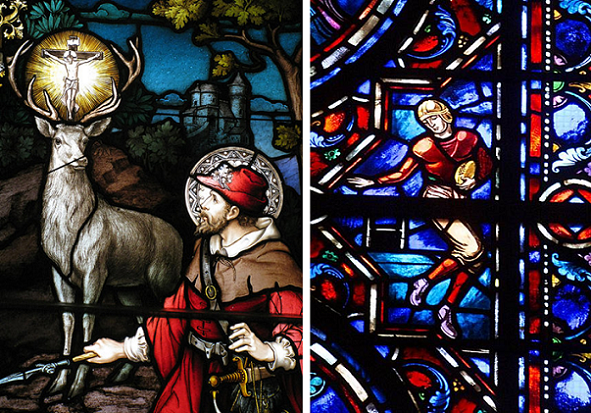
The Sports Bay was officially ”assigned” (or dedicated) on January 29, 1928. It was reported that at the ceremony, which was attended by representatives of all the sports depicted in the new stained-glass windows, “at the high altar rail stood Baseball, and Boxing, and Horse Racing and the rest - and no fire came from heaven.”
The Final Word ...
“If you want to lift yourself up, lift up someone else.”
(Booker T. Washington)